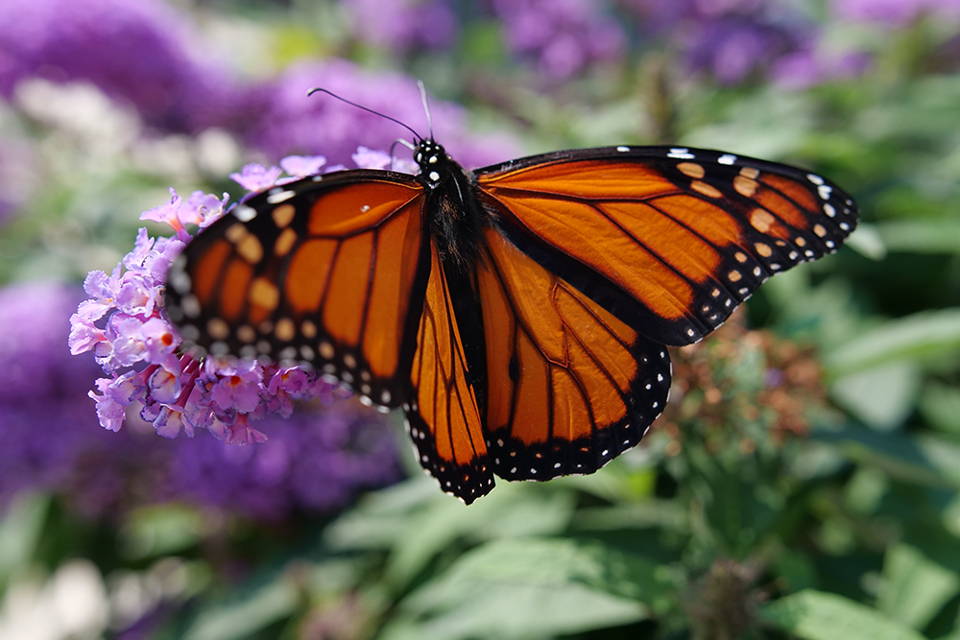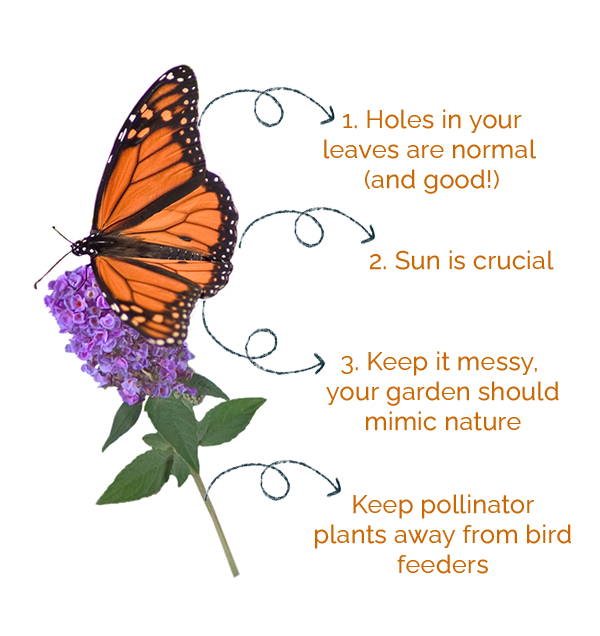Five things nobody tells you about butterfly gardening

Once upon a time, people gardened mostly for themselves - because they liked the colors, and the flowers, and because landscaping makes a house look nice. In the last several years, however, people are increasingly finding other reasons to garden, and other rewards from planting. Butterfly gardens are the perfect example, but a becoming a gardener who gardens for butterflies may take some shifts in the way that you think about what a garden should look like. These five truths about butterfly gardening may surprise you - but trust us, they are part of the fun of the voyage of discovery!
#1. Holes in your leaves are normal - and good!
It's natural to feel a little panicked when you walk out to the garden and find that one of your plants is all of the sudden riddled with holes. But take a deep breath and look closer: it's very likely that the holes are being made by caterpillars. Caterpillars are, of course, the larval or "baby" stage of a butterfly's life cycle, and they are voracious consumers of foliage as they bulk up in preparation for their transformation from the earth to the sky. You may not be able to see any caterpillars right away, but still, do not spray anything - even an organic or non-toxic pesticide.
Even if you aren't gardening for butterflies, or you discover that the holes in the leaves were made from a different insect, there's still no need to spray. Plants and insects go together like, well, peanut butter and chocolate, and a plant will typically not be harmed long-term by a little insect feeding. In fact, insects in your garden are a good indicator that it's a healthy space for all sorts of life.
#2. Sun is crucial
Butterflies are cold-blooded animals and need to stay warm to keep up their metabolism. As such, they are far more likely to visit - and be active in - sunny gardens that get at least six hours of bright sun a day. Fortunately, all of the plants that are beneficial to pollinators need full sun, too.
Only have part shade? Don't panic! You can still grow a butterfly garden. You may not get quite as many visiting pollinators as a garden in full sun, but you can still have a garden that benefits birds and insects.
#3. Keep it messy
To attract birds and butterflies, your garden should mimic nature in some ways. And one of those is to keep things a bit untidy. This doesn't mean letting the weeds take over or a bunch of muddled, unkempt plants, but it does mean that you should not be in a big rush to "clean up" the garden when the season is over. Leaving the stems and spent flowers and foliage provides crucial shelter for overwintering insects of all types, and the seed heads of many perennials, like echinacea, black-eyed Susan, and Agastache sustain non-migrating birds. Wait until spring to cut back your perennials, and even then, if possible, leave the trimmings in a pile until temperatures have been over 50°F for at least a week to let any sleepy insects wake up and find a new home.
#4. Keep away from bird feeders
People who care about gardening for butterflies are likely already the kind that care about nature, so are quite likely to have bird feeders and the like in their yards. Do note that birds are natural predators of butterflies and caterpillars, however, so take care that you're not simply creating an all-you-can-eat buffet for birds while you try to welcome insects.

#5. Just add water
If there's one non-plant element you could add to your garden to make it super-friendly to pollinators, it would be water. Believe it or not, insects need to drink, too! You needn't install any kind of fancy, expensive fountain - a simple rock with a little depression in it, or a bird bath with rocks in it for insects to land on, or even leaving some bare ground to accumulate puddles after watering or a rain fall will do the trick.

